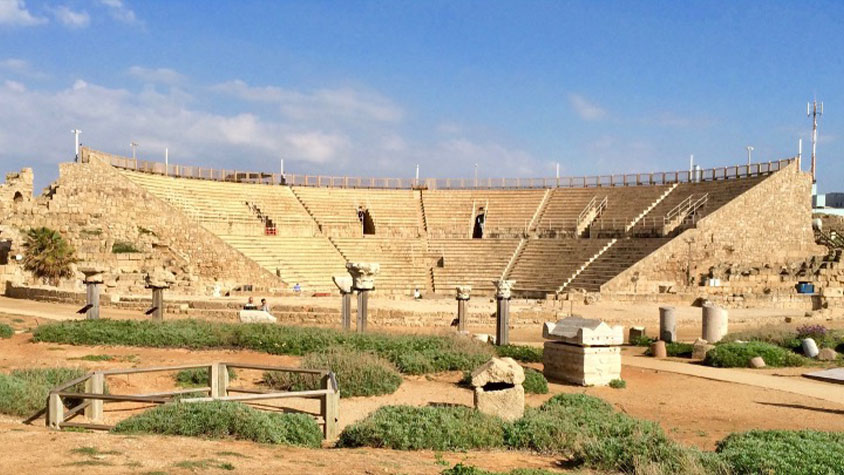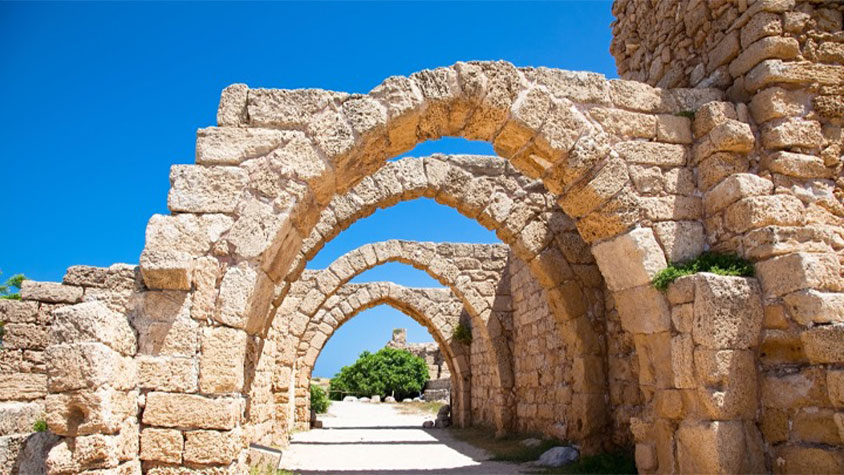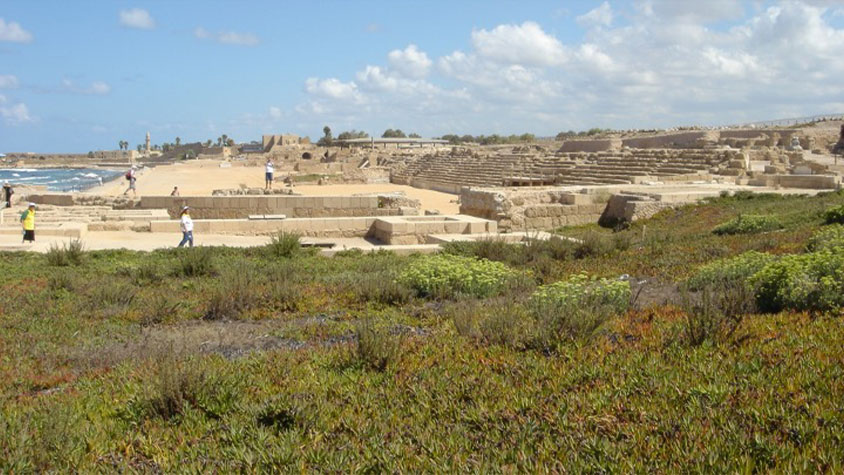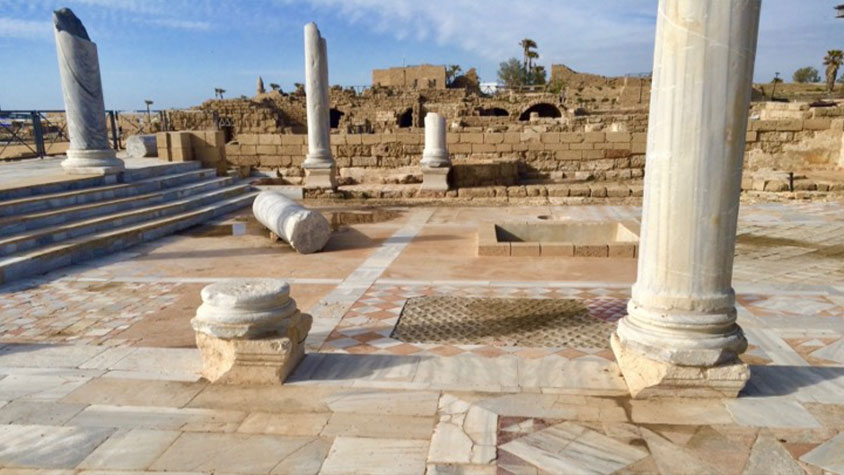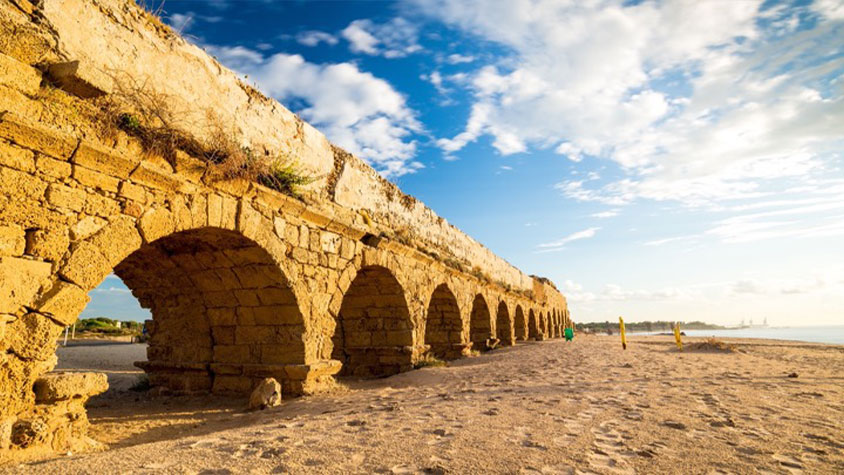The ancient Mediterranean seaport of Caesarea Maritima is perhaps one of Israel’s most famous attractions. Located about halfway between Tel Aviv and Haifa on the Mediterranean Coast in the lower Galilee, the city was first built in the third century BC, but its popularity and importance grew when Herod the Great established it as an urban center and harbor. It also gained prominence in early church history, notably for being the place where the Apostle Paul was imprisoned for two years.
Caesarea, sometimes called Caesarea Maritima (biblical Caesarea), is a town on Israel’s Mediterranean coast, north of Tel Aviv and Jaffa. It is the home of Caesarea National Park. Caesarea was once a magnificent Roman harbor built by Herod the Great in honor of Caesar Augustus.
The remains of the ancient Roman theater in Caesarea. Roman theaters hosted community events such as plays, pantomimes, choral events, orations, and public discourse. The semicircular design enhances the natural acoustics.
This city was the home of the centurion, Cornelius, Peter’s first Gentile convert to believe in Jesus as the Messiah. Caesarea served as the administrative, economic, and cultural capital for the province of Judea in the Roman Empire.
Caesarea – Herod’s Promontory Palace. When Judea became a Roman province in 6 CE, Caesarea Maritima replaced Jerusalem as its civilian and military capital and became the official residence of its governors, such as the Roman procurator Antonius Felix, and prefect Pontius Pilatus. The Bible records that Paul was imprisoned here (Acts 25).
Overview of the excavation of Caesarea. In the background, you can see the remains of an amphitheater. This is located just a short distance from the theater. Every five years, the city hosted major sports competitions, gladiator games, chariot races, and theatrical productions overlooking the Mediterranean Sea.
The ornate floors and mosaics in Caesarea indicate the wealth and prominence of this city during the times of the Roman Empire.
The Ancient Roman Aqueduct brought water to Caesarea from the southern slope of Mount Carmel, over 6 miles away. Originally built by Herod the Great around 22 BC, the aqueduct was expanded by Hadrian around AD 130. This aqueduct supplied water to Caesarea for over 1,200 years.
Plan your next trip to Israel!
Email Cindy at cindy@israeladvantagetours.com or visit www.israeladvantagetours.com to make your trip of a lifetime a reality!

